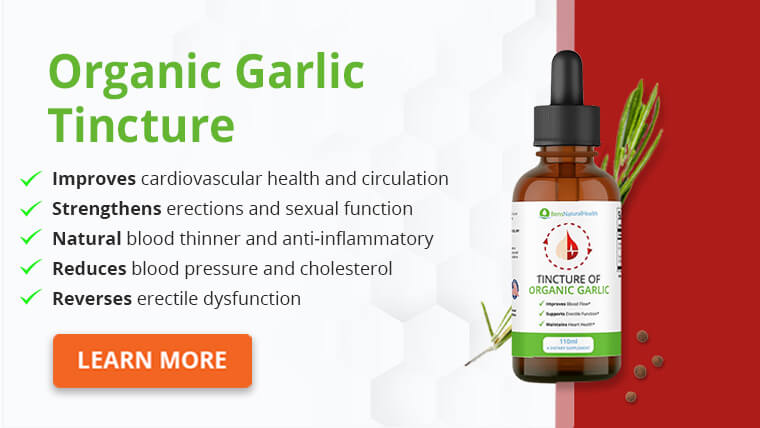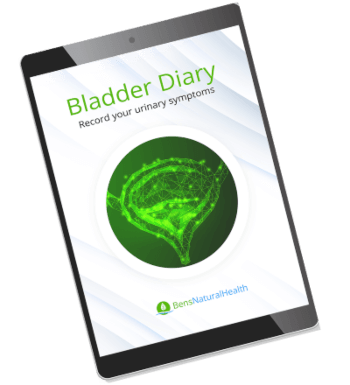Yeast is a type of fungus.
Just like bacteria and viruses, we can’t see fungi, but they are everywhere – in the air, soil, on our skin, and inside our bodies.
Two common yeasts that cause human diseases are Cryptococcus and Candida.
This article focuses on Candida infection – the most rampant yeast infection among healthy women and men.
Keep reading to learn how to get rid of a yeast infection.
What is a yeast infection?
A yeast infection is an overgrowth state when yeasts revolt, grow, and multiply, which makes us fall sick.
Other than acute illnesses, other conditions that can trigger a yeast infection include:
- Diseases that weaken our immune systems, such as HIV, cancer, and diabetes
- Hospitalization
- Receive organ or stem cells transplant
- Undergoing chemotherapy
- Long-term usage of certain medications, including antibiotics, corticosteroids and TNF (tumor necrosis factor) inhibitors
Get your FREE bladder diary
- Daily bladder diary
- Better understand your urinary symptoms
- Step-by-step guide
Types of yeast infections in women and men
Yeasts love to live in warm, moist environments, and both women and men have plenty of these areas on our bodies!
When yeast infection happens in different body parts, we experience different symptoms.
Fortunately, yeast (Candida) infections can be treated with many medications with the help of alternative home remedies.
These treatment remedies are essentially similar across yeast infections in different body parts.
Before we proceed with treatments, it is important to know if one has yeast infections.
Here we highlight symptoms of yeast infections in these body parts: mouth, vagina, and penis.
Mouth yeast infections
Mouth yeast infections, scientifically called oral candidiasis, are more commonly seen in people with a weakened immune system, although they can happen in healthy people too.
If you have mouth yeast infections, you may experience the following:
- White patches on the inner cheeks, tongue, roof of the mouth, and throat
- Mouth and throat redness or soreness
- Loss of taste
- Pain while eating or swallowing
- Cracking and redness at the corners of the mouth
Vaginal and penile yeast infections
According to the Centers for Disease Control and Prevention, 75% of women will have at least one episode of vaginal yeast infection in their lifetime.
While a yeast infection is not as common in male genitals, it does happen.
Overgrowth of Candida albicans typically occurs at the head of the penis (glans) and the foreskin, causing a condition called balanitis.
The symptoms of vaginal and penile candidiasis include:
- Vaginal or penile redness, itching, or pain
- Thick, smelly vaginal and penile discharge
- Pain during sexual intercourse
- Pain or discomfort when urinating
How to get rid of a yeast infection
If you have a yeast infection, your first step should be to visit a doctor. As an infectious disease, a yeast infection can spread to other body parts or transmit to people surrounding you. Also, there is a possibility that it is some other disease instead of yeast infection.
Your doctor will likely prescribe you antifungal medications such as clotrimazole, miconazole, or nystatin.
However, if you prefer to try home remedies to get rid of your yeast infection, here are a few natural cures for yeast infections supported by research evidence.
A quick glance
The table below shows a list of scientifically-proven home remedies for yeast infections in women and men, along with how to use them.
| Home remedy | How to use |
| Probiotics and yogurts | Eat as food or health supplements or apply directly to affected body parts |
| Boric acid | Apply its powder to affected body parts or insert its capsules, ovules or suppositories into the vagina |
| Vinegar and apple cider vinegar | Dilute into solution and shower the affected body parts or oral rinse |
| Tea tree oil | Dilute into solution and apply to the affected body parts |
| Garlic | Eat as food or health supplements, or apply to the affected body parts |
| Propolis | Apply as vaginal ovules or cream at affected body parts |
| Sodium bicarbonate | Dissolve in water and use the solution as an oral rinse or shower the affected body parts |
Probiotics and yogurts
Probiotics are microorganisms that provide health benefits to the host when consumed in adequate amounts.
You can find probiotics in plenty of natural food sources, including yogurt, kefir, kombucha, sauerkraut, pickles, miso, tempeh, kimchi, sourdough bread, and certain types of cheeses.
Among all, yogurt contains the highest amount of probiotics. Probiotics are also widely available as health supplement products in the market.
Probiotics are known to reduce yeast infection in different systems of the human body.
Reviews found probiotics exhibit fungicidal effects. They can stop the growth of Candida albicans and prevent the yeast from attaching to epithelial cells in our mouth and genitals.
Results from another recent randomized controlled trial also support adding probiotics to the usual treatment regime for oral candidiasis, as probiotics increase the cure rate within a shorter duration of treatment.

Boric acid
Boric acid is a white, odorless, water-soluble compound. It is most commonly administered in powder form or packaged in capsules, ovules, or suppositories to be inserted into the vagina.
Boric acid must not go into the mouth, so it cannot be used to treat oral candidiasis.
Scientists are still yet to figure out the exact mechanism of how boric acid gets rid of yeasts, but its fungistatic (stopping the growth of yeasts) effect has been clearly shown in laboratory experiments.
In addition, boric acid provides itchiness and inflammation relief to your vaginal or penile yeast infection. You can buy boric acid in pharmacies as an over-the-counter product.
Vinegar and apple cider vinegar
A 2015 in vitro study demonstrated the antifungal properties of apple cider vinegar against Candida, supporting its potential use as a natural remedy for oral yeast infection prevention.
Other than apple cider vinegar, vinegars made from grapes (wine vinegar), malted barley or oats (malt vinegar), and industrial alcohol (distilled white vinegar) achieve antifungal effects too.
Vinegars are believed to combat yeast infection by influencing vaginal pH, turning the environment less favorable for yeasts to grow.
Studies suggest showers with a diluted vinegar solution (1–2 tablespoons vinegar per 1 L water) improve yeast infection symptoms.
However, be cautious when using vinegar to get rid of a yeast infection, as it can cause skin irritation or even chemical burns.
Tea tree oil
Melaleuca alternifolia (tea tree) has been used as a medicinal plant in Australian indigenous tribes for more than 80 years.
The essential oil extracted and refined from the plant demonstrates strong anti-bacterial, anti-parasite, and antifungal properties.
It works by disrupting the cell membrane and mitochondria (the powerhouse) of yeasts, hence stopping its activity.
In vitro research studies also demonstrated tea tree oil’s ability to interrupt the yeasts’ biofilm formation.
Biofilms are communities of microorganisms firmly adhering to a surface. Yeasts grow stronger and survive better with biofilms.
Tea tree oil, when used as a vaginal suppository, is also effective in treating vaginal candidiasis. This finding was reported by another study in 2015.
It works even better when administered together with Amphotericin B, a classic drug for yeast infection.
Like boric acid, tea tree oil is not meant for ingestion, and it must be diluted before applying it to the affected body parts.
Garlic
A newly published review found Allium sativum (garlic) and its products can stop the growth of many types of fungus, including Candida, Trichophyton, Aspergillus, and Rhodotorula.
You can consume garlic as food, snacks, and aqueous extracts or apply garlic oil directly on the infected sites.
The antifungal property of garlic is attributed to its high allicin content, which inhibits the growth of the fungus.

Propolis
Propolis is a plant-based sticky substance produced by bees. It contains more than 160 biochemical compounds which can be utilized to improve human health.
A 2022 in vitro study tested the efficacy of propolis against 3 different Candida species. The result is promising, and they found that propolis inhibits the activity of all 3 Candida strains.
Research reviews recommended using propolis ovules or cream for vagina yeast infections, and it can likely be used in penile yeast infections too.
Sodium bicarbonate
Sodium bicarbonate, more commonly known as baking soda, can be used to reduce the acidic pH of the vagina.
This creates a less favorable environment for the growth of yeasts. Sodium bicarbonate also provides immediate symptom relief caused by skin irritations associated with vaginal and penile yeast infections.
You can use sodium bicarbonate for bathing or irrigating your vagina or penis. Research recommends sitting in a bath containing sodium bicarbonate (6–12 g/L water) for 15 minutes twice daily.
For the irrigation method, dissolve 15–30 g of sodium bicarbonate in 500 mL of warm water and cleanse the affected site with the solution.
In addition, sodium bicarbonate is proven effective in treating oral yeast infections. A 2016 study compared the effect of 3% sodium bicarbonate in 104 post-surgery patients.
Results revealed the group utilizing sodium bicarbonate oral rinse has a lower incidence of mouth Candida albicans infection than the control group (2% vs. 13%).
Conclusion
Given the rise of antimicrobial resistance to medications, natural remedies possess great potential in the future of yeast infection therapy.
Many people follow a Candida diet which aims to reduce the amount of candida fungi in your body.
A massive amount of research is ongoing, but more randomized controlled trials are needed to endorse the application of natural remedies to get rid of a yeast infection.
Currently, there is no clear guideline from authoritative agencies on the dosage and detailed instruction on how to use these natural remedies. Therefore, consult your healthcare providers before taking home remedies for your yeast infections.
Explore More







